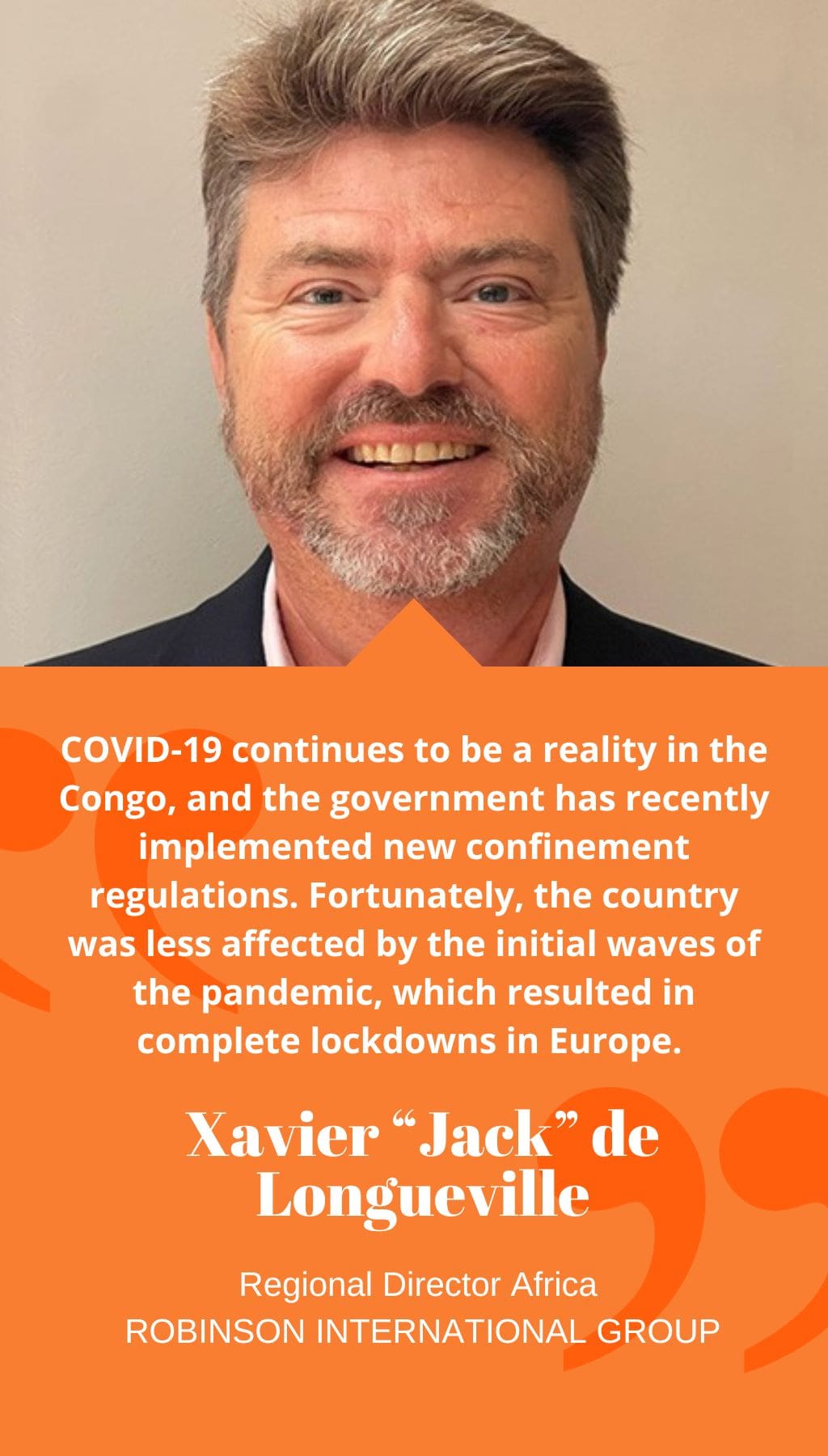
- DRC | 24 November 2022

What have been the main developments at Robinson International since last year?
Over the past year, we have experienced significant growth in our environmental analysis business line, which now represents a substantial portion of our overall business. Additionally, our geological analysis unit has also seen substantial growth. We have tripled the size of our lab team and established a new department for sample preparations. By the end of 2022, we anticipate that geological analysis will become the largest part of our operations. We have also expanded our team by 15% and doubled our lab equipment. Furthermore, we have gained recognition as a trusted service provider, capable of conducting audits and providing training in accordance with international standards. It has been incredibly rewarding to witness our Congolese staff training individuals from other countries on top-quality sampling techniques
What is driving the growth of Robinson’s environmental services?
Environmental analysis was previously dominated by large European or American mining companies. However, the government now mandates that all players adhere to stricter rules regarding chemical spills into water and soil. Additionally, in the past, environmental testing samples were often sent abroad, primarily to South Africa. To address this, we have made substantial investments over the past five years to develop in-country capacity and expand our service offerings. From offering eight types of analysis in 2021, we now provide 90 types of environmental analysis.
How is the Congo managing the pandemic?
COVID-19 continues to be a reality in the Congo, and the government has recently implemented new confinement regulations. Fortunately, the country was less affected by the initial waves of the pandemic, which resulted in complete lockdowns in Europe. In 2021, we experienced a relatively normal year. However, at mine sites where strict pandemic management measures were in place, normal shift changes were disrupted, and some staff members were confined to the site for up to two months.
What have been the key regulatory changes in the DRC in recent years?
One significant regulatory change that has caused considerable stress in the country is the government’s decision to increase taxation for strategic minerals such as cobalt and lithium. This decision was made a few years ago and continues to create challenges for mining operations. Another notable regulatory change is the requirement for all labs to obtain ISO accreditation. While we view this as a positive development and a natural progression, we find some additional requirements, such as obtaining ISO accreditation from a Congolese company, to be unjustified and opportunistic. Additionally, there has been a proliferation of government agencies requesting independent audits and imposing taxes. We now have to interact with multiple geology departments, and there have been reports of the creation of a new department. Finally, we have observed more companies complying with subcontracting laws and making ARSP accreditation mandatory for tender applications.
How are inflationary pressures impacting the industry?
Inflationary pressures are significantly impacting our industry, particularly in terms of electricity supply and cost. There have been instances where we operated without grid power for almost a month and a half, resulting in soaring energy prices. The rising costs of consumables and materials are also concerning. Additionally, the government has implemented import-export taxes on trucks entering and leaving the country, leading to long queues at the borders and increased purchasing costs for equipment and consumables. This environment has caused several subcontractors to disappear, especially when they have to deal with expensive equipment and multiple layers of taxation.
What is your approach to training and inclusivity in the company?
We take great pride in our training program, which provides opportunities for young graduates to gain experience in our labs. Gender diversity is also a significant focus for us, and we have made significant progress in achieving a 50-50% gender ratio in our laboratory, moving away from a staff composition that was previously 100% male.














